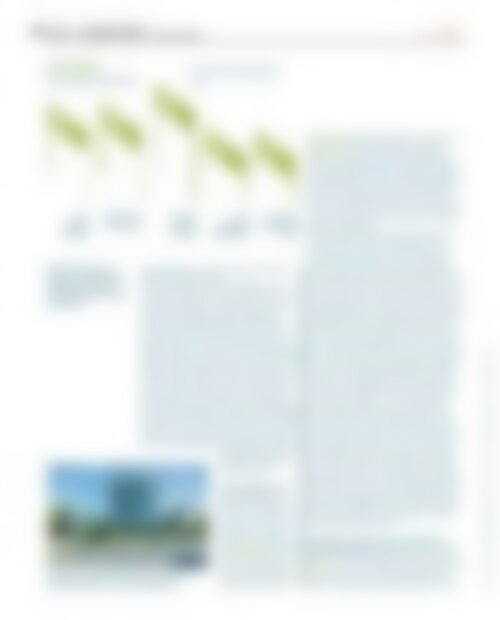sportFACHHANDEL 08_2018 Leseprobe
Erfolgreiche ePaper selbst erstellen
Machen Sie aus Ihren PDF Publikationen ein blätterbares Flipbook mit unserer einzigartigen Google optimierten e-Paper Software.
126 | COVERSTORY | Succession 8.<strong>2018</strong><br />
HIGH HURDLES<br />
Share of potential successors who ...<br />
SOURCE: DIHK-REPORT ZUR UNTERNEHMENS-<br />
NACHFOLGE 2017, MULTIPLE ANSWERS WERE<br />
POSSIBLE<br />
40%<br />
40%<br />
... have<br />
problems<br />
financing<br />
... underestimate<br />
requirements<br />
Potential successors face<br />
high risks. That makes it even<br />
harder to find, for example,<br />
matching companies or secure<br />
the financing.<br />
50% 25%<br />
... can’t find<br />
a suitable<br />
company<br />
KfW secures the financing from the house banks and is<br />
therefore the sponsor no. 1 for the small business.<br />
... have<br />
insufficient<br />
qualifications<br />
23%<br />
... fear a high<br />
inheritance tax<br />
burden<br />
company employs five fixed employees as well as<br />
additional temporary staff.<br />
Thereby the path into the family company was, as<br />
it is to many business owners’ children, more of a<br />
way back to Kai Schröer – whereas that is meant in<br />
the best sense of the word. With an apprenticeship<br />
as media designer he had actually chosen a<br />
career aside from specialist sports retail. After his<br />
apprenticeship he worked in advertisement and<br />
only after that he re-orientated himself towards the<br />
family company. So it was in no case certain that Kai<br />
Schröer would eventually choose to carry on with<br />
the traditional company. “Due to my own sportive<br />
activity I somehow always remained close to sports<br />
and the company. After a few years in the advertising<br />
industry I was looking for a new challenge“, is<br />
the way Kai Schröer puts it. Thereby he was looking<br />
for a “business challenge of which one can imagine<br />
spending one’s entire life with. So that’s why I came<br />
back to our company.” By studying sports management<br />
he made himself fit for independence and has<br />
meanwhile been back to<br />
his family company for<br />
about three years.<br />
The management buy<br />
out is another popular<br />
possibility of company<br />
take-over. In the best case<br />
the take-over is thereby<br />
planned in the long run.<br />
Just like, for example, the<br />
Biwakschachtel in Koblenz.<br />
The business with a<br />
history of three decades<br />
was taken over by Daniel<br />
Jung as sole proprietor<br />
and David Kossak as shareholder in 2014. Daniel<br />
Jung had already worked part-time in Jürgen<br />
Wisselmann‘s shop while studying philosophy,<br />
history and English, and had even remained loyal<br />
to the Biwakschachtel after his graduation, initially<br />
in the sales-staff. “Eventually”, Daniel Jung depicts,<br />
“the offer of taking over the shop came from the<br />
former owner Jürgen Wisselmann. I decided not to<br />
become a teacher, but rather take a risk.” He found<br />
a partner in Daniel Kossak, who was also willing to<br />
invest in the company.<br />
Another big advantage of management buy outs:<br />
Because the successor is often already from the<br />
company there are often less problems during<br />
transfer, than during a take-over by a third party.<br />
The successor knows the market, already knows<br />
the important suppliers and industry contacts, and<br />
can seamlessly take over once the old owner retires.<br />
That was also the case with the Biwakschachtel. Daniel<br />
Jung reports that the take-over was made easier<br />
by Jürgen Wisselmann supporting the new business<br />
manager in the store even after the take-over, and<br />
him supporting him with guidance and resources<br />
for a one-year transitional period. Thereby a “seamless<br />
transfer could be guaranteed to the customers”.<br />
But of course that doesn’t mean the shop is going to<br />
be continued without any changes after a management<br />
buy out. Today Jung mainly presents shoes,<br />
rucksacks, climbing ggods, tents or sleeping mats<br />
on a surface of 300 qm. ”The investments I made”,<br />
the businessman explains, “were nearly all put<br />
in the inventory. We took on new products. We<br />
have changed the product range in a way that all<br />
products are there in an organised fashion. Today,<br />
we have triple the inventory in our storage than we<br />
did compared to the point of take-over.” That was<br />
also possible because, in cooperation with the old<br />
owner, a clever solution concerning the purchase<br />
price could be found: “In cooperation with Jürgen<br />
Wisselmann we found a model of financing, during<br />
which the purchase sum was variably agreed on in<br />
terms of him being involved in the business’ future<br />
development, depending on the revenue numbers.<br />
That way we didn’t have to put strain on the shop<br />
with additional financial risks.”<br />
One of the most well-known examples for a<br />
management buy in, namely take-over by a third<br />
party, in the outdoor industry was the chain Globetrotter’s<br />
take-over of the Swabian outdoor specialist<br />
Woick in the year 2014. Back then Globetrotter<br />
didn’t merely get well-introduced stores for its bu-<br />
PHOTOS: ILYYAST + YEVHENII DUBINKO/ISTOCKPHOTO.COM, SPORT SCHRÖER, KFW-BILDARCHIV / RÜDIGER NEHMZOW
















